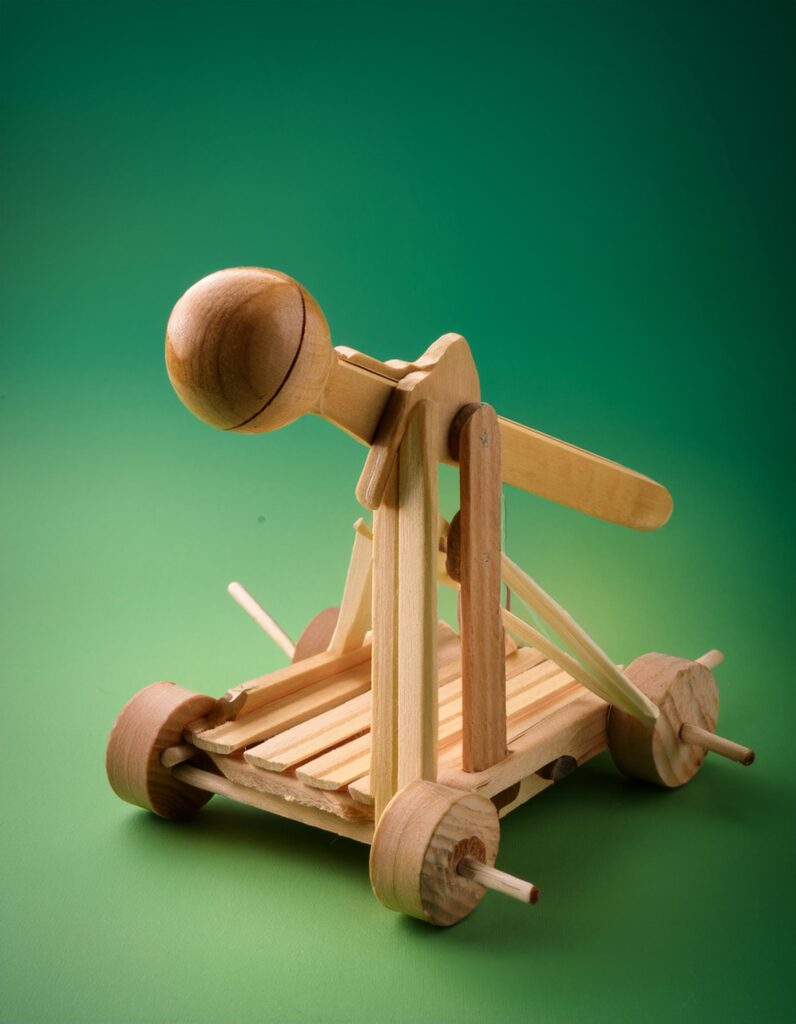



Looking for a simple, hands-on science experiment that keeps your kids engaged and teaches real physics? This Popsicle Stick Catapult is the perfect mix of fun and learning. Using just a few common household items, your kids can dive into the world of energy, force, and motion—all while launching pom-poms across the room!
This easy science experiment for kids is great for curious minds ages 5–11 and is perfect for at-home learning, rainy day activities, or even a backyard STEM challenge. Plus, it’s a creative way to reduce screen time and encourage problem-solving skills through play.
By building a simple catapult, your child will explore key STEM concepts like:
Perfect for parents searching for STEM learning, easy at-home experiments, and hands-on physics activities!
This experiment introduces kids to core physics principles in a fun, relatable way. Understanding how simple machines like levers work not only builds a foundation for science education but also encourages creative problem-solving.
Plus, hands-on learning supports critical thinking and boosts curiosity—skills that are essential for success in school and beyond. Educational activities for kids like this one promote science enrichment while keeping the fun front and center!
Quick Facts
- Time Needed: 15–30 minutes
- Difficulty Level: Easy
- Best For: Ages 5–11 (elementary school kids)
- Science Type: Physics
- Mess Level: Low
- Materials Needed:
- 7 Popsicle sticks (easy-to-find supplies)
- 3 Rubber bands
- 1 Plastic spoon
- Pom-poms, marshmallows, or cotton balls (soft projectiles)
- Tape (optional, for extra stability)
The Popsicle Stick Catapult works by using a lever system to transfer potential energy (stored energy) into kinetic energy (motion). When your child presses down on the spoon, energy builds up in the bent popsicle sticks. Once released, that energy is transferred to the pom-pom, launching it into the air!
The angle of the spoon and the strength of the push affect how far and high the pom-pom flies. This is a simple, kid-friendly way to explore key physics concepts like force, tension, and trajectory.
Try This: Challenge your child to adjust the number of popsicle sticks or change the launch angle. Which setup makes the pom-pom fly the farthest?
Fun Fact Corner

Did you know that ancient catapults were used over 2,000 years ago in battles to launch stones, fireballs, and other heavy objects? Today, the same physics principles are used in roller coasters, slingshots, and even space exploration!
Ask your child: “If you had a giant catapult, what would you launch—and how far could it go?”
Grab your popsicle sticks and start building! This simple catapult is more than just a fun activity—it’s an exciting way to sneak science into playtime.
Pin it for later or share it with a fellow science-loving parent!
Share your results with us on social media @arecipeforscience



Try another hands-on activity: Check out our Balloon Rocket Experiment for more physics fun!
Let’s make learning fun, interactive, and unforgettable—one science experiment at a time!
This fun experiment falls under Physics, specifically Mechanics. Let’s find out a little more about both.

Imagine the universe as a giant puzzle. Every falling apple, bouncing ball, or beam of sunlight is a clue. Physics is the science that helps us put those clues together to understand how the world works. It’s like solving nature’s ultimate mystery—asking questions like:
At its core, physics explores matter, energy, force, and motion—the fundamental building blocks of everything around us. From the tiniest particles to the vastness of space, physics is the roadmap that explains it all.
Check out more Physics experiments.
You might not realize it, but physics is everywhere. It’s not just something that lives in textbooks or science labs—it’s part of your everyday life.
Here’s how you interact with physics every single day:
Whether it’s investigating volcanoes, hurricanes, or even space rocks, there’s always something new and exciting to explore!
Understanding physics helps us:
Physics is a vast field with many branches that dive deep into different parts of nature’s puzzle. Here are some of the key subfields:
One of the oldest and most practical branches of physics is Mechanics—the study of motion, forces, and energy.
Think about it:
Mechanics answers all of these questions. It focuses on three main areas:
Mechanics isn’t just about scientific theories—it shapes the world we live in.
Check out more Physics experiments.
Mechanics is everywhere—from nature’s patterns to human-made machines. It explains how rivers flow, how birds fly, and how rockets launch into space. Understanding mechanics helps us:
So next time you throw a frisbee or watch a roller coaster zoom by, remember—you’re witnessing mechanics in action!
Ready to dive deeper into fun physics experiments? Check out our Popsicle Stick Catapult and explore the power of force and motion hands-on!
Click here for the full experiment details. Checkout the main website: One Little Project
Get experimenting!
Feed your knowledge.
Come back for more recipes for science!
Experiment with this experiment! More popsicle sticks, less flexible spoon. The variety is endless and makes for fun and interesting results.